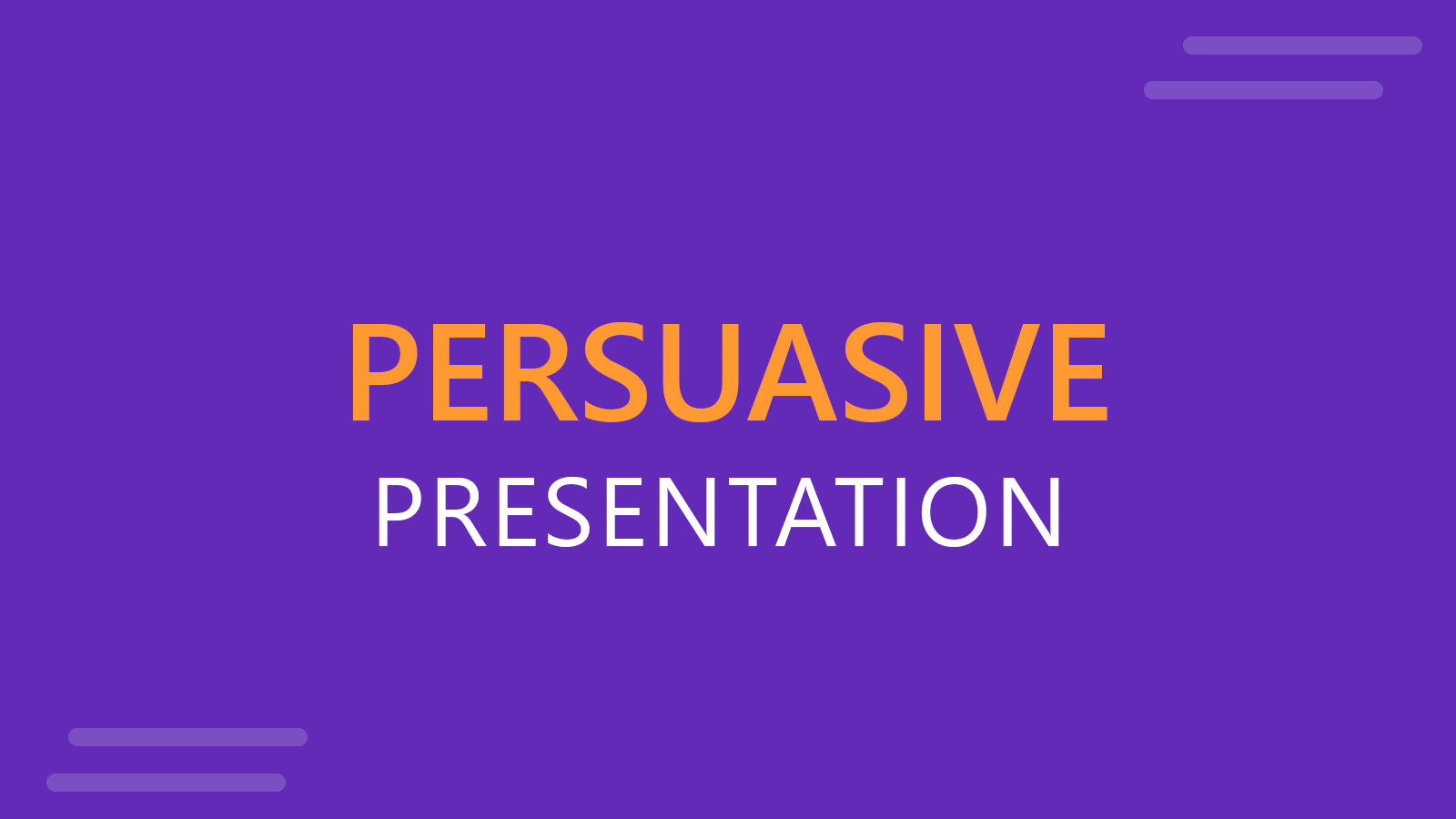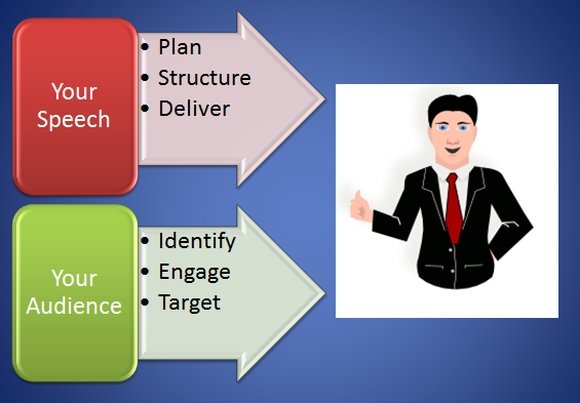Best Way to Make a Persuasive Presentation
Last updated on July 30th, 2024

Creating a persuasive presentation is an essential skill for professionals. Whether you’re pitching a new idea, selling a product, or advocating for a cause, mastering the art of persuasion can significantly impact your audience. This article explores the best way to make a persuasive presentation, providing tips and techniques for preparation, structure, design, delivery, and audience engagement.
Understanding Persuasive Presentations
A persuasive presentation aims to convince the audience to adopt a particular viewpoint or take specific action. Unlike informative presentations, which focus on delivering facts, persuasive presentations blend information with emotional appeals, storytelling, and compelling arguments. The goal is to influence the audience’s beliefs, attitudes, or behaviors.
A mixture of information, motivation and inspiration delivered to audience using effective techniques is all what it takes to prove your point. If we go with the words of Ralph Waldo Emerson, an American essayist, “Speech is power: speech is to persuade, to convert, to compel”. This simply tells that the power of a true speaker lies in grabbing the attention of hundreds of eyes sitting in front, and persuading their minds that the opinion is valid.

Plan, Preparation and Research
Thorough preparation and research are the foundations of a successful persuasive presentation. Start by clearly defining your objective and understanding your audience. What are their needs, preferences, and potential objections? Gather relevant data, anecdotes, and examples that support your message. Organize your information logically, ensuring that each point builds on the previous one.
Structuring Your Presentation
A well-structured presentation is crucial for maintaining audience engagement and conveying your message effectively. Here’s an ideal structure:
- Introduction: Capture your audience’s attention with a strong opening. This could be a provocative question, a compelling statistic, or a powerful story. Clearly state your purpose and preview the main points you will cover.
- Body: Divide the body of your presentation into clear, logical sections. Each section should focus on a single key point supported by evidence, examples, and anecdotes. If you create a presentation in PowerPoint, you can use PowerPoint transitions to guide your audience smoothly from one point to the next.
- Conclusion: Summarize your main points and restate your message. End with a strong closing that reinforces your call to action or leaves a lasting impression.
Designing Effective Slides
Effective slide design enhances your message and keeps your audience engaged through the persuasive presentation. Here are some tips for creating visually appealing slides using Microsoft PowerPoint that will support your persuasive speaking effectively:
- Consistency: Use a consistent color scheme, font, and layout throughout your presentation.
- Clarity: Keep slides simple and uncluttered. Use bullet points, short sentences, and relevant images to convey your points.
- Visuals: Incorporate high-quality images, graphs, and charts to illustrate your points. Visuals should complement, not overwhelm, your message.
- Minimal Text: Avoid overcrowding slides with text. Use key phrases and speak to the details.
Writing a Persuasive Speech
Writing a persuasive speech is an art that requires careful planning, clarity of thought, and a deep understanding of your audience. Here’s how to craft a compelling speech that you can use along the presentation:
- Know Your Audience: Understand the demographics, interests, and potential biases of your audience. Tailor your message to resonate with them.
- Clear Message: Define the core message you want to convey. Ensure it is clear, concise, and memorable.
- Strong Opening: Start with a hook that grabs attention. This could be an intriguing question, a surprising fact, or a personal anecdote.
- Ice Breaker Questions: Engage your audience right from the beginning with ice breaker questions. These questions can be related to your topic and should be designed to make the audience think and feel involved. For example, if your presentation is about environmental conservation, you might ask, “How many of you have taken steps to reduce your carbon footprint this month?” or “What is one small change you believe could have a big impact on our planet?”
- Logical Structure: Organize your speech with a clear beginning, middle, and end. Each section should flow logically to the next.
- Evidence and Examples: Support your arguments with data, statistics, and real-life examples. This adds credibility and reinforces your points.
- Emotional Appeal: Use stories and language that evoke emotions. Connecting emotionally with your audience can be a powerful tool in persuasion.
- Call to Action: Conclude with a strong call to action. Clearly state what you want your audience to do, believe, or feel after your speech.
Ice Breaker Questions in your Persuasive Speech: Tips and Examples
Ice breaker questions can set a positive tone and foster a connection between you and your audience. Here are some tips and examples for incorporating them effectively:
- Relevance: Ensure your ice breaker questions are relevant to your topic and audience. This keeps the audience engaged and makes the questions more impactful. Example: For a presentation on health and wellness, ask, “What is your favorite healthy habit that you practice daily?”
- Simplicity: Keep the questions simple and easy to answer. This encourages participation without putting anyone on the spot. Example: For a business presentation, ask, “What is the most innovative business idea you’ve heard recently?”
- Interactivity: Encourage interaction by allowing the audience to share their answers. This can be done through a show of hands, small group discussions, or using interactive tools like polling software. Example: For a presentation on digital transformation, ask, “Who here uses a digital assistant like Siri or Alexa regularly? How has it changed your daily routine?”
You create an immediate connection with your audience by incorporating these quick ice breaker questions in your persuasive speech, making them more receptive to your message.
Crafting Compelling Content for a Persuasive Speech & Presentation
The content of your presentation should be engaging, informative, and persuasive. Here are some techniques to make your content compelling:
- Storytelling: Use stories to illustrate your points and connect with your audience emotionally. Personal anecdotes and real-life examples can be very powerful.
- Data and Evidence: Support your arguments with data, statistics, and credible sources. This adds legitimacy to your message and it is a common a practice in research presentations.
- Emotional Appeals: Appeal to your audience’s emotions to create a stronger connection. Use language and examples that resonate with their values and experiences.
Mastering Delivery Techniques
The delivery can make or break your presentation. Here are some tips for delivering your persuasive presentation effectively:
- Body Language: Use confident and open body language. Make eye contact with your audience, use gestures to emphasize points, and move naturally.
- Vocal Variety: Vary your pitch, pace, and volume to maintain interest and emphasize key points. Avoid monotone delivery.
- Practice: Rehearse your presentation multiple times. Practice in front of a mirror, record yourself, or present to a friend or colleague for feedback.
Engaging Your Audience
Keeping your audience engaged with a persuasive speech is critical to the success of your presentation. Here are some strategies to maintain engagement:
- Interactive Elements: Incorporate interactive elements such as polls, Q&A sessions, or small group discussions.
- Questions: Ask rhetorical questions or invite the audience to share their thoughts. This encourages active participation. You can use question slides to end your presentations with a Q&A session.
- Feedback: Pay attention to audience reactions and adjust your delivery accordingly. If you notice signs of disinterest, try to re-engage with a question or an interesting fact.
Using Visual Aids and Technology in Persuasive Presentations
Visual aids can enhance your persuasive presentation by making complex information more accessible and engaging. Here’s how to use them effectively:
- Charts and Graphs: Use charts and graphs to present data clearly and concisely. Ensure they are easy to read and understand.
- Videos: Short videos can illustrate points and add variety to your presentation. Ensure they are directly relevant to your message.
- Technology: Leverage technology tools to enhance your presentation. This could include using a laser pointer, a remote clicker, or interactive software.
Practice and Feedback
Practicing your presentation is essential for delivering it smoothly and confidently. Here’s how to practice effectively:
- Multiple Rehearsals: Practice your presentation multiple times. This helps you become familiar with the flow and identify any areas that need improvement.
- Feedback: Seek feedback from colleagues, friends, or mentors. Use their insights to refine your content and delivery.
- Adjustments: Be open to making adjustments based on feedback. Practice incorporating these changes to ensure a polished final presentation.
Conclusion
Creating a persuasive presentation involves a combination of preparation, structure, design, delivery, and engagement. By following these tips, you can effectively convey your message and influence your audience. Remember, the best way to make a persuasive presentation is to be well-prepared, use compelling content and visuals, and engage your audience throughout.
